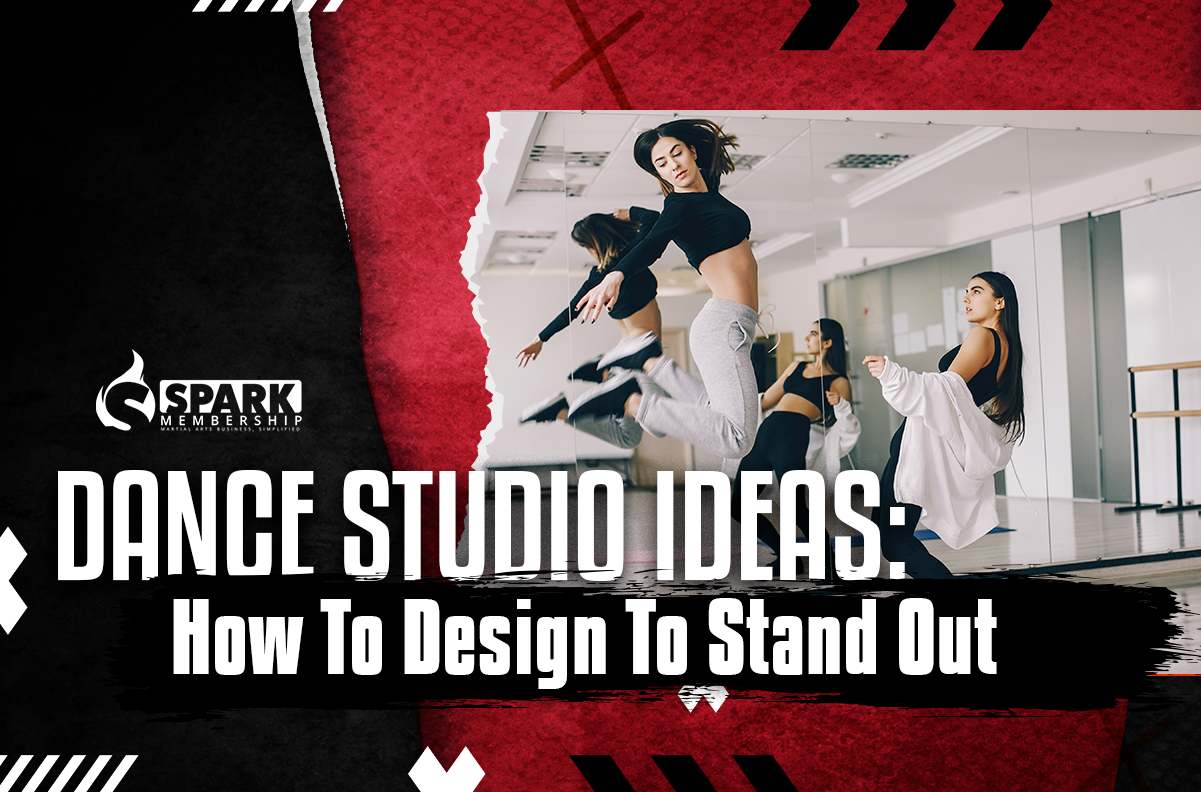
The right dance studio design can make all the difference. It’s not just about looks; a well-designed studio can boost your business success and improve the quality of your classes. When dancers feel good in a space, they perform better, and customers notice. A smart, functional studio is a crucial step to keeping classes full and the business thriving.
What Makes a Good Dance Studio?
A good dance studio is much more than just a room with a mirror and some music. It’s a crafted space that caters to the unique needs of dancers, ensuring their comfort, safety, and inspiration. Here’s a detailed breakdown of what makes a dance studio not just good, but outstanding:
- Understanding Dancer Needs:
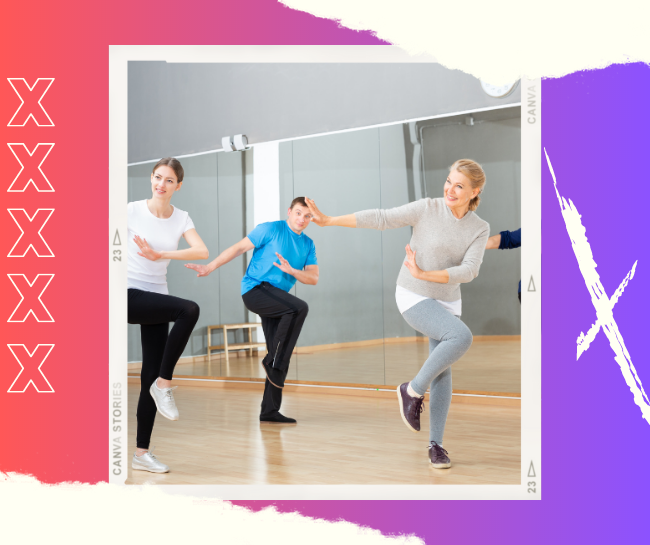
Dancers, regardless of their level, have specific requirements that differ from typical athletes. A good studio caters to:
- Physical Space: Dancers need room to move, jump, spin, and practice large routines without feeling constricted.
- Mood and Atmosphere: Soft lighting can create an ambiance, while adequate ventilation ensures dancers remain refreshed.
- Storage: Personal lockers or cubbies for shoes, clothes, and personal belongings are essential.
- Balancing Form and Function:
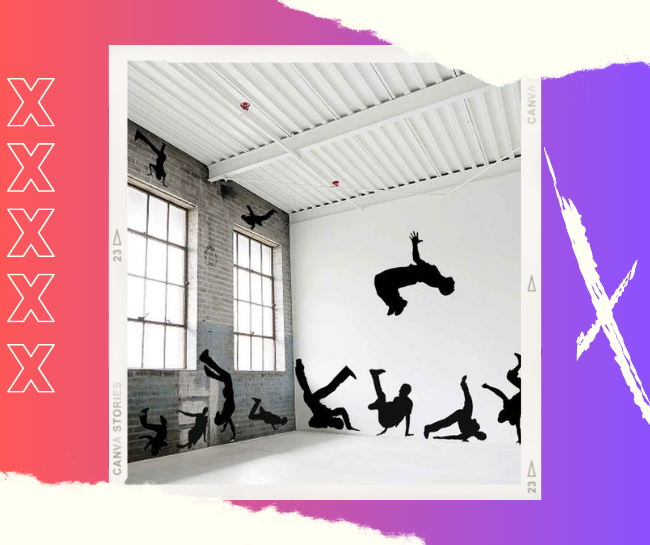
It’s vital to strike a balance. While the aesthetics can inspire and uplift, the functionality ensures classes run smoothly.
- Aesthetics: Wall murals, themed decorations, or even a simple color palette can set the mood and energy of the space.
- Functionality: Easy access to equipment, clear floor space, and well-organized props and tools facilitate seamless classes.
- Acoustics:
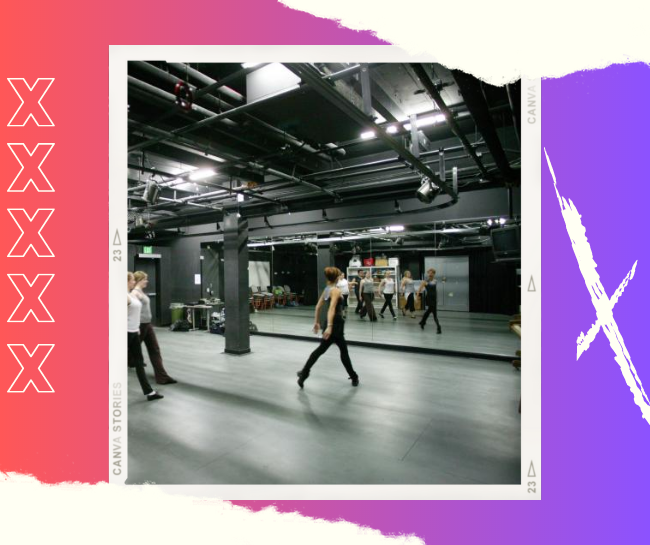
Dancers move to the rhythm. The sound quality is vital.
- Sound Systems: A top-notch system ensures clear beats and melodies, essential for routines.
- Soundproofing: This prevents external noises from interrupting classes and ensures music from one studio doesn’t bleed into another.
- Flooring:
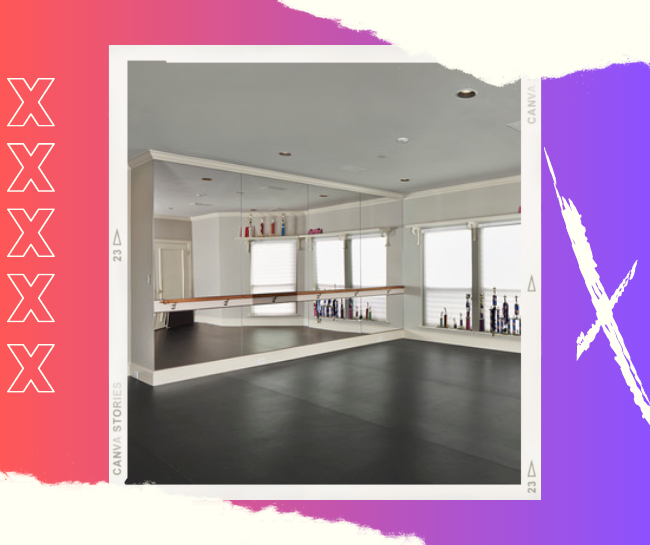
The type of flooring can make or break a dancer’s experience.
- Shock Absorbency: Ideal dance floors provide some level of shock absorption to protect dancers’ joints.
- Traction: The right amount of grip can prevent slips and falls.
- Versatility:
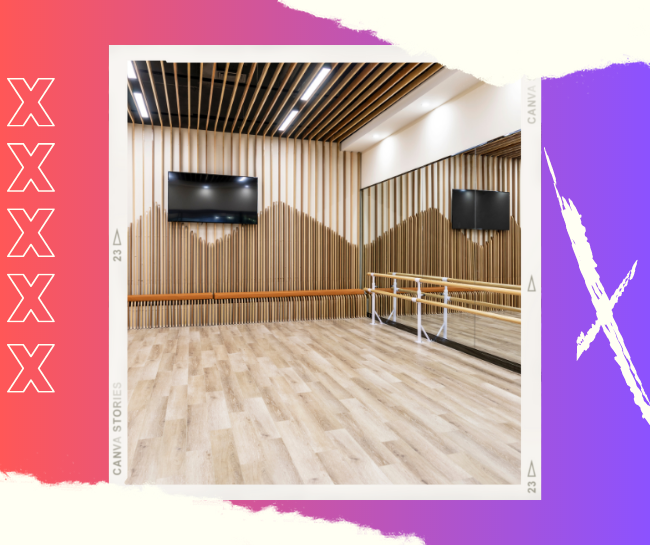
With various dance forms gaining popularity, versatility is key.
- Modularity: Being able to modify the studio layout for different classes, from ballroom to hip-hop, is a huge plus.
- Equipment: Having adjustable barres, portable mirrors, and other movable equipment allows the studio to cater to varied dance needs.
- Safety Features:
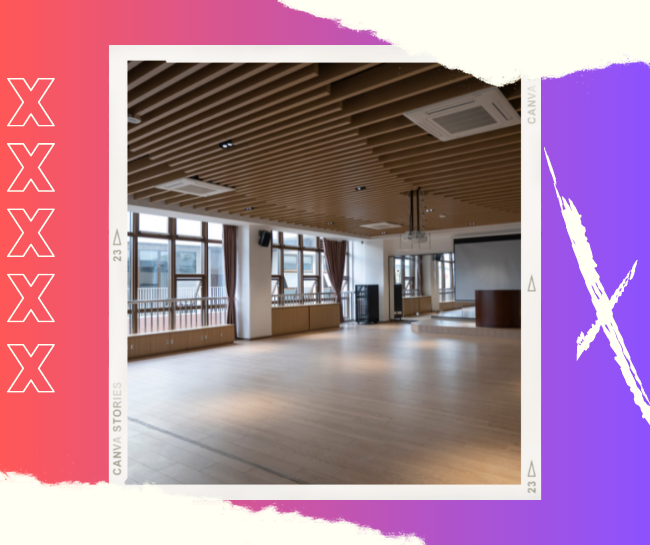
From first-time learners to professional dancers, everyone should feel safe.
- Ventilation: Proper air circulation ensures dancers don’t feel suffocated and reduces the risk of fatigue.
- First Aid: Easily accessible first aid kits and clear emergency exit signs are non-negotiable.
In essence, a good dance studio is a blend of multiple elements working harmoniously. When well-executed, it becomes an integral part of a dancer’s journey, nurturing their growth and amplifying their passion.
Key Elements Inside a Dance Studio
Ensuring comfort and optimizing the dance experience within a studio boils down to some critical interior elements:
- Mirrors:
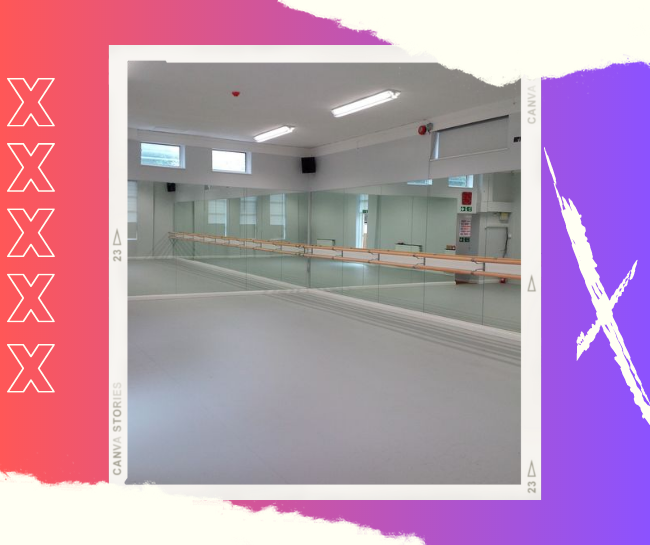
Good mirrors in a dance studio do more than just show reflections. They let dancers see and correct their movements as they dance, help them avoid bumping into others, and give a confidence boost when they notice how much they’ve improved over time.
- Barres:
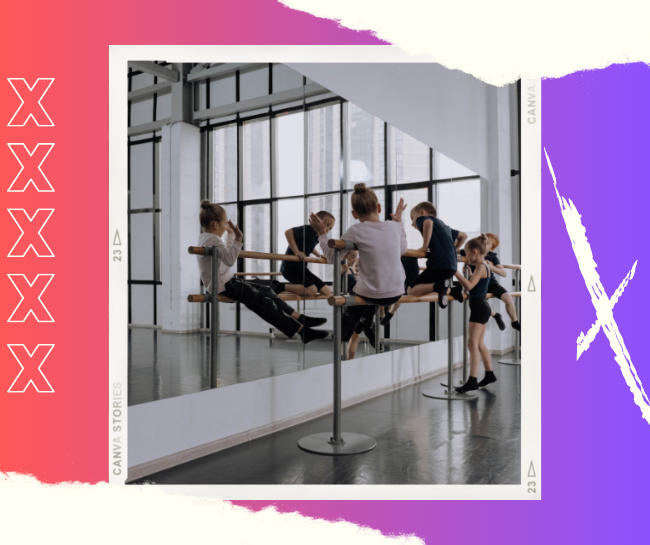
Barres are more than just supports for ballet dancers. They help with balance during exercises and improve strength and flexibility. Adjustable barres mean that everyone, no matter their height, can practice comfortably.
- Sound Systems:
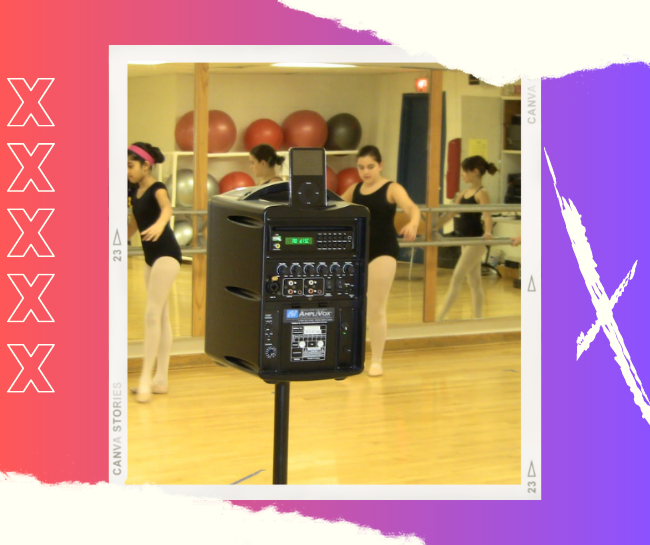
Music is central to dance, so a great sound system is crucial. It should provide clear sound, have adjustable volume, and be easy to connect to various devices, ensuring every beat or rhythm is heard clearly.
- Flooring:
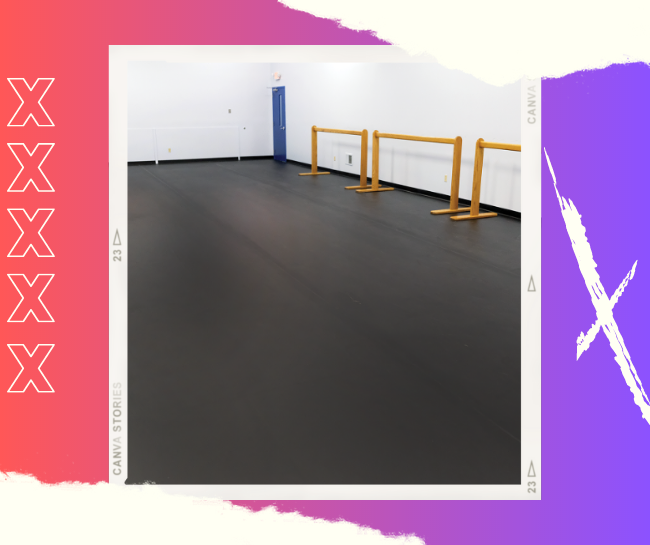
Dancers need a floor that helps them move but also keeps them safe. The right floor offers a balance of grip and slide, and cushions impacts, which is especially important for moves that involve jumping.
- Ventilation and Climate Control:
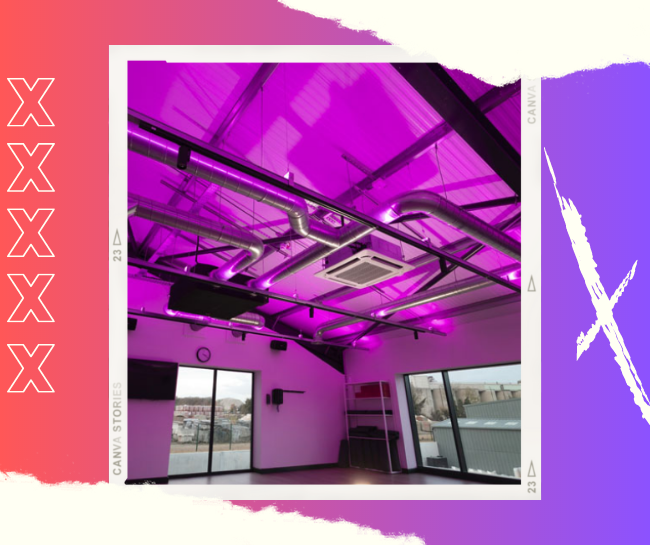
Dancing can be intense, so it’s essential to keep the studio fresh and at a comfortable temperature. Fresh air and a reliable heating or cooling system can make dance sessions much more enjoyable.
- Storage Solutions:
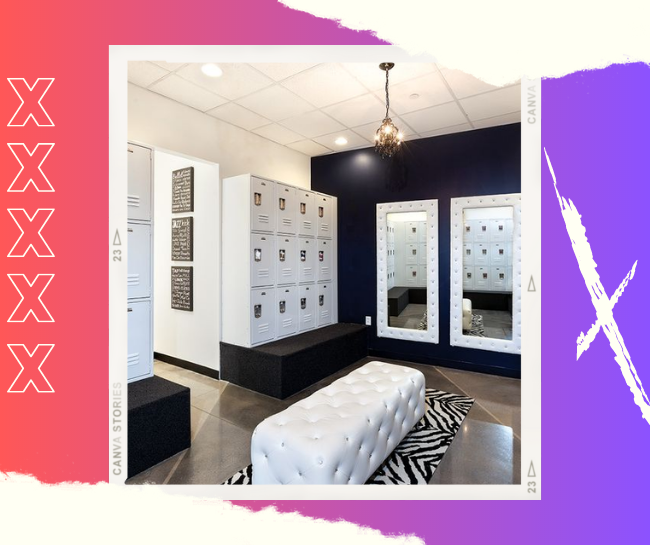
A tidy studio is a functional one. Dancers need lockers or storage spaces for their things, and there should also be places to keep dance props and tools organized.
These basic features play a big role in how a dance studio feels and functions. When they’re right, they make the studio a place where dancers love to come and practice.
Designing for Safety in a Dance Studio
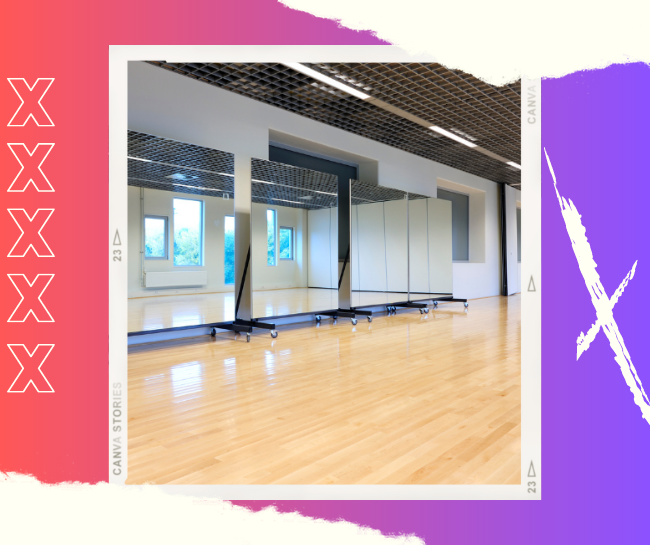
The safety of dancers is paramount in any studio setting. It’s not just about preventing accidents, but also ensuring long-term health and well-being. Here’s how studio owners can prioritize safety in their design:
Flooring Choices: The foundation of any dance space is its floor. Dancers require a surface that is both slip-resistant and shock-absorbent. Wooden sprung floors are a popular choice as they absorb impacts, reducing the risk of injuries, especially to the joints. On top of these, marley or vinyl finishes can provide the right balance of grip and glide.
Safe Spacing and Layout: Overcrowding can lead to collisions and accidents. It’s essential to know the maximum capacity of a dance room and stick to it. Designing a studio with ample space for free movement, including buffer zones around barres and other equipment, will ensure dancers can move without hindrance.
Adequate Lighting: Proper lighting is crucial. Dancers need to see clearly to avoid missteps. Invest in lights that illuminate the room evenly without causing glare or shadows. Dimmable lights can also be beneficial for setting the mood without compromising safety.
Ventilation and Air Quality: Dancing is strenuous. Without proper ventilation, the air can become stuffy, leading to fatigue and reduced concentration, which can cause missteps and injuries. Installing efficient ventilation systems ensures a steady flow of fresh air.
Emergency Exits and First Aid: Clearly marked emergency exits are a must. In case of emergencies like fire or other threats, dancers should be able to evacuate quickly and safely. Additionally, studios should be equipped with a readily accessible first-aid kit, complete with essential supplies to treat minor injuries.
Equipment Maintenance: Regular checks on barres, mirrors, sound systems, and other equipment will ensure they remain safe to use. Loose barre fittings or cracked mirrors can pose injury risks and should be fixed promptly.
Training and Awareness: Beyond the physical design, safety in a dance studio also revolves around awareness. Conducting regular safety briefings and training for both staff and students will instill a culture of safety. This includes teaching dancers about safe practices, stretches, and warm-ups to prevent strain or injury.
By integrating these safety-focused design elements and practices, studio owners create an environment where dancers can focus on their art, knowing their well-being is being looked after. A safe studio is a thriving studio, drawing in dancers who value not just the quality of instruction, but the care with which the space is curated.
💡Designing for safety in a dance studio is crucial to protect dancers from potential injuries, ensuring a secure environment for creativity and growth.
Making Your Dance Studio Stand Out
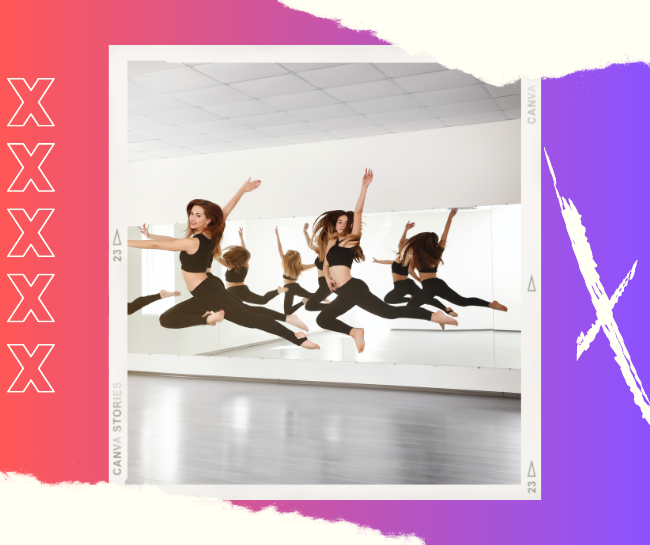
In the competitive world of dance, creating a studio that leaves a lasting impression is crucial. Here are ways to make your dance studio stand apart:
Unique Design Ideas: Beyond the basics, consider adding elements that reflect the studio’s ethos and style. For instance, using murals or wall art that resonate with the history of dance or the studio’s own journey can create a connection with visitors. Integrating relaxing lounge areas with comfortable seating and maybe even a small library of dance literature can make the studio feel more like a community space.
Incorporate Brand Identity: A strong brand is memorable. Consider creating a logo that captures the essence of your studio, and place it prominently. Use consistent colors, fonts, and themes in your studio’s decor that match your branding materials. This visual consistency reinforces your brand’s presence and identity.
Offer Specialized Classes: In addition to traditional dance forms, offering specialized classes or workshops, like therapeutic dance or regional dance forms, can attract a broader audience. Collaborate with renowned choreographers or dancers occasionally for masterclasses, adding a unique selling proposition.
Leverage Technology: Integrate tech solutions that enhance the user experience. This might include a state-of-the-art booking system, virtual reality dance sessions, or LED lighting that syncs with the rhythm of the music.
Community Engagement: Hosting regular events such as open dance nights, community performances, or dance film screenings can solidify your studio’s place in the local community. Such initiatives not only draw in dancers but also their families and friends, creating a broader network of engagement.
Feedback and Improvement: Actively seek feedback from your members. Consider having a suggestion box or conducting occasional surveys. Implementing changes based on genuine feedback shows members that their opinions are valued, leading to increased loyalty.
Eco-friendly Initiatives: More and more businesses are moving towards sustainability, and dance studios can too. Using eco-friendly materials in construction, implementing recycling programs, or even offering classes in dance forms that focus on nature can be attractive selling points.
💡 An optimized dance studio design enhances dancers’ performance, creativity, and safety by providing proper layout, acoustics, and equipment.
Picking the Perfect Palette: Best Colors for Dance Studios:
Soft, neutral colors like beige or muted pastels can create a serene environment. But if you’re teaching vibrant dance forms like salsa or hip-hop, don’t shy away from bolder hues!
Soft Neutral Tones:
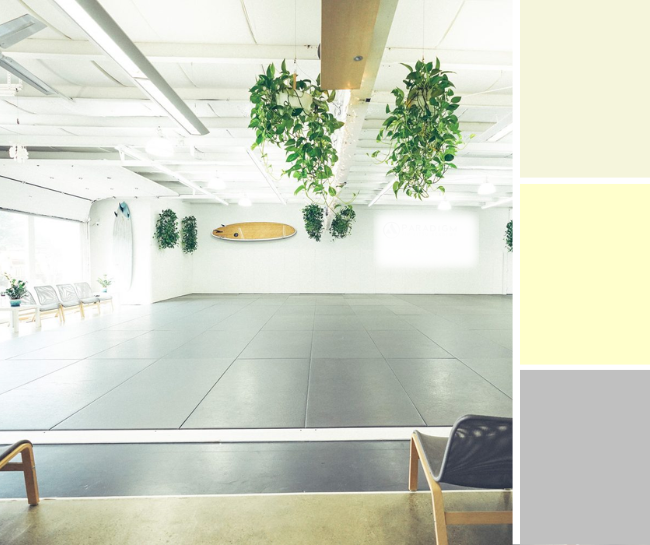
Neutral colors create a calm, focused environment. They avoid distracting dancers and allow them to concentrate on their movements. Soft neutrals also serve as an excellent backdrop for other decorative elements, ensuring that the space feels open and airy.
Deep Blues and Purples:
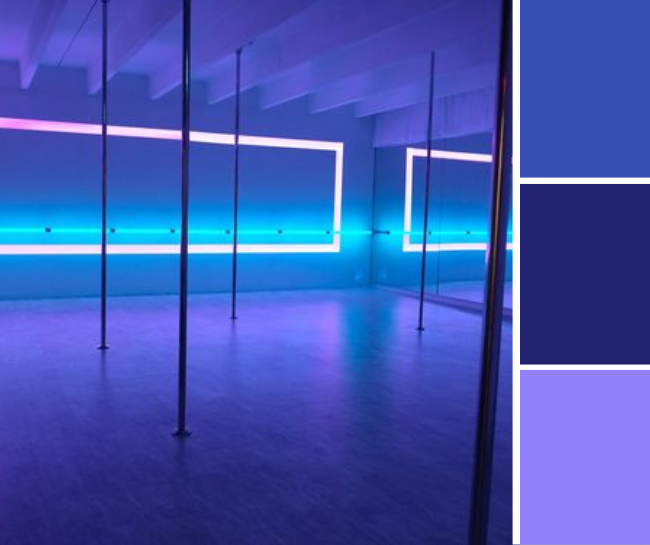
These shades evoke a sense of depth and serenity. Deep blues can be grounding, helping dancers connect with their inner selves, while purples can ignite creativity and passion. These colors are especially suitable for studios focusing on contemporary or interpretative dance forms.
Earth Tones:
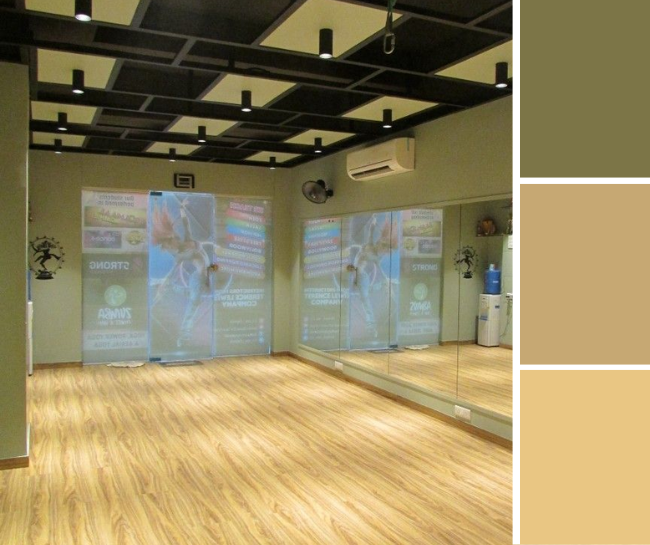
Rooted in nature, earth tones can bring a sense of grounding and connection to a dance studio. These colors can be particularly beneficial for dance forms that emphasize flow, rhythm, and a bond with nature, such as certain traditional or folk dances.
Pastels:
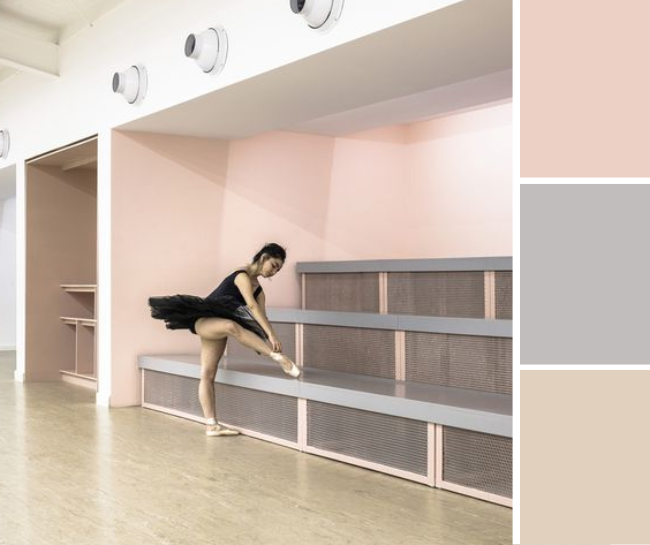
Pastels bring a touch of softness and freshness to the studio. They are light, and uplifting, and can make a space feel youthful and vibrant. Ideal for studios catering to younger dancers or those offering dance forms like ballet, pastels can infuse the space with a dreamy and graceful aura.
Monochrome:
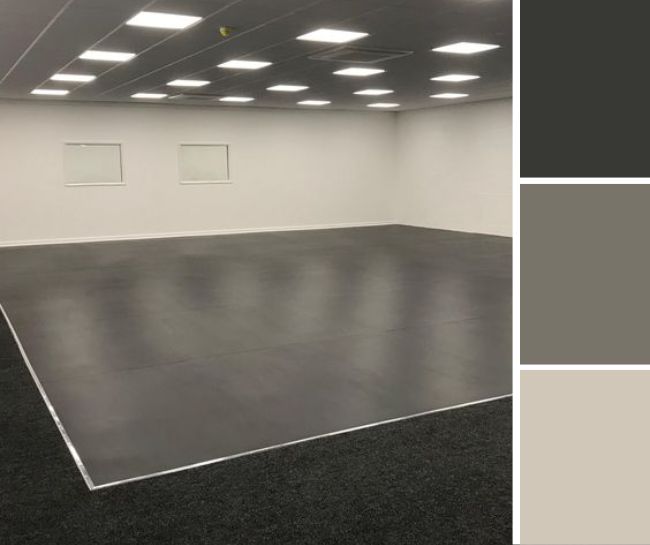
A monochrome palette can give a dance studio a modern and sleek look. The contrast of black and white provides clarity, which can be crucial for forms that require precision. Additionally, a monochrome theme allows colorful costumes and props to stand out brilliantly.
When selecting a color palette for a dance studio, it’s essential to consider the type of dance predominantly taught and the overall vibe the studio wishes to exude. While the color on the walls plays a dominant role, this theme can be carried through in other elements like mats, curtains, cushions, and even the studio’s branding material.
It’s also beneficial to combine these palettes thoughtfully, using neutrals as a base with accents in bolder or more vibrant shades. Always remember that while aesthetics are crucial, the ultimate goal is to create an environment where dancers feel inspired, focused, and at home.
💡 The right color palette in a dance studio can significantly impact mood, energy, and focus, enhancing the overall dance experience for both instructors and students.
Finishing the Floor: Best Finishes for Dance Studios:
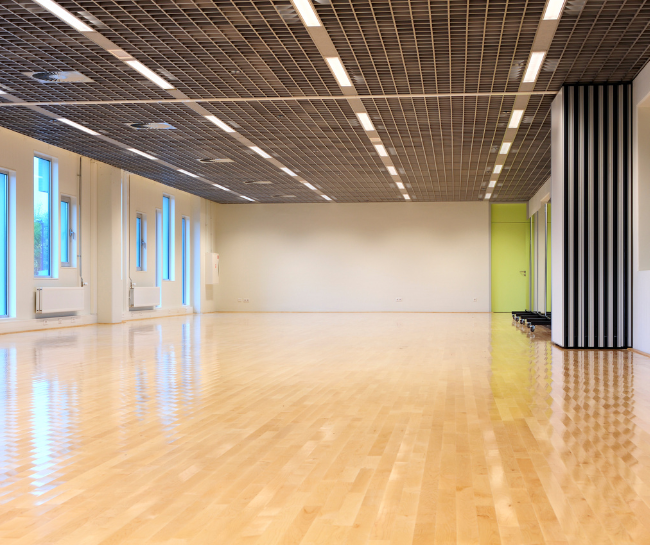
Marley floors are popular due to their slip-resistant nature. They offer a smooth surface that’s gentle on dancers’ feet. However, hardwood finished with a non-slip sealant can also be a great choice.
Your dance studio is a canvas, and with the right ideas, it can become a masterpiece. Whether you’re seeking professional design help or embarking on a DIY project, remember that every choice should center around the dancers’ needs and safety. Embrace your vision and create a space that moves with passion and purpose.
Dive into one of our blogs: “Dance Studio Marketing Ideas to Boost Enrollment: Social Media Tactics.” Discover expert tips to captivate your audience and showcase your studio’s unique charm.